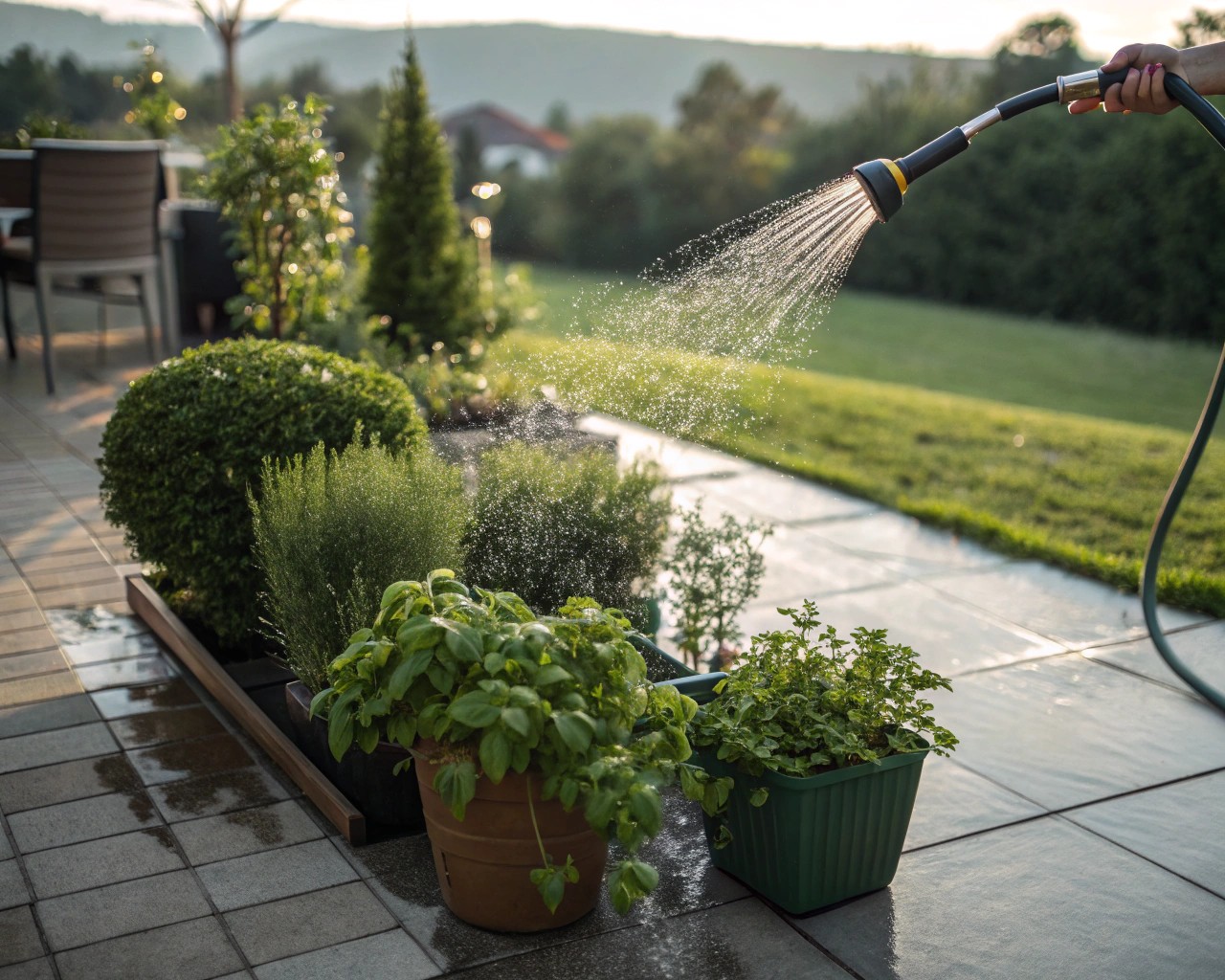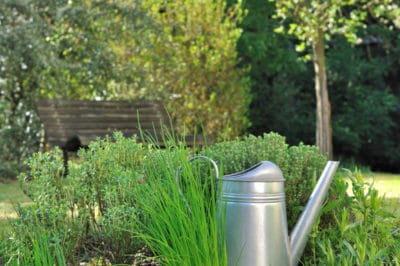Strategic Planning and Site Selection

Most herbs thrive in full sun, needing 6–8 hours of direct sunlight daily. Choose a location close to your kitchen for easy harvesting. This increases the likelihood of regular use and prevents neglect. Consider placing herb containers on patios, windowsills, or balconies that receive strong morning or afternoon light.
Climate is equally important. Use your USDA hardiness zone to determine what herbs will survive winter and which need overwintering indoors. For example, rosemary and lavender are perennial in zones 8–10 but must be protected or grown as annuals in zones 4–6.
Soil drainage is critical. If your garden site is prone to retaining water, raise the bed or grow in containers. Herbs hate soggy roots, especially Mediterranean species like thyme, oregano, and sage.
Tip: Survey every sunny spot within 20 steps of your kitchen. Convenience boosts harvest frequency and garden success.
Soil Preparation and Growing Mediums

Herbs prefer a soil pH between 6.0 and 7.5. Test your soil before planting and amend with lime if too acidic. Unlike vegetables, herbs don’t need nutrient-rich soil. Slightly lean soils encourage better essential oil production, giving your herbs more flavor.
Improve soil structure by mixing in aged compost or leaf mold, which helps retain moisture without waterlogging. If your soil is too dense (clay), lighten it with coarse sand or perlite. For sandy soils, boost organic matter to improve moisture retention.
Group herbs by moisture needs:
| Moisture-Loving Herbs | Drought-Tolerant Herbs |
|---|---|
| Basil, parsley, cilantro, chives, mint | Thyme, oregano, rosemary, lavender, sage |
| Lemon balm, lemongrass, dill | Chamomile, marjoram, savory |
Tip: Don’t over-fertilize. Too much nitrogen = leafy growth and weak flavor.
Climate Zone Considerations and Plant Selection

| Zone | Best Perennials | Annual Herbs |
|---|---|---|
| Zones 2–4 | Chives, thyme, oregano (protected) | Dill, basil, cilantro |
| Zones 5–7 | Mint, sage, lavender (sheltered) | Basil, parsley, dill |
| Zones 8–10 | Rosemary, oregano, lemon verbena | Cool-season herbs: cilantro, arugula |
Use succession planting for herbs that bolt quickly (e.g., dill, cilantro). In colder zones, plant hardy herbs near south-facing walls to benefit from microclimates. In hot zones, offer partial shade to parsley, cilantro, and chervil to prolong harvest.
Companion Planting and Herb Relationships

Some herbs boost each other’s growth, while others compete. For example:
- Basil grows well with parsley, marigold, and oregano
- Avoid planting basil near rue or sage
- Thyme, rosemary, and lavender share soil and water needs and thrive when grouped
- Keep mint separate! It spreads aggressively and should be contained
Tip: Plant mint in a bottomless bucket sunk into the ground to prevent spreading.
Herbs also repel pests:
- Lavender deters moths and flies
- Rosemary discourages cabbage moths
- Basil repels mosquitoes and flies
Some combinations also enhance flavor profiles and growth:
- Chives and tarragon grow well together and deter aphids
- Fennel is best planted alone as it can inhibit the growth of nearby plants
- Dill helps attract beneficial predatory insects like ladybugs
Garden Design and Layout Approaches

Choose a design based on space, style, and access:
Herb Wheels
Arrange 6–8 herbs around a central hub (often mint in a pot). This classic layout fits raised beds or round beds well.
Herb Spirals
Use rocks or bricks to build a rising spiral bed. The top is hot and dry (great for thyme and rosemary), while the base is moist and shaded (perfect for chervil or mint).
Raised Beds
Great for beginners and older gardeners. Design narrow beds (no wider than 4 ft) to allow access from all sides. Group by height and moisture needs.
Containers
Use clay pots, vertical planters, or window boxes. Perfect for renters or balcony gardeners. Group herbs with similar watering needs together.
Integrated Edible Landscapes
Blend herbs into flower borders or among vegetables. Many herbs repel pests and look attractive, making them valuable for decorative edible landscaping.
Watering and Irrigation

Watering herbs properly keeps them healthy and flavorful. Let the soil dry slightly between waterings, especially for Mediterranean herbs. Always water early in the day to reduce disease risk.
Use drip irrigation or a soaker hose to avoid wetting leaves. In containers, water more frequently. Stick a finger into the soil—if it’s dry past 1 inch, it’s time to water.
Tip: Herbs in pots dry out faster. Group containers together to create humidity and reduce evaporation.
Rainwater is preferable to tap water, especially in areas with hard water. Collect rainwater in barrels and use it to irrigate your herbs naturally.
Seasonal Care and Harvesting
Annual Herbs
- Basil, dill, cilantro, parsley need replanting yearly
- Harvest regularly to prevent bolting
- Sow seeds every 2–3 weeks for a steady supply
Perennial Herbs
- Cut back thyme, oregano, and sage after flowering
- Prune woody herbs like rosemary lightly in early spring
- Divide mint and chives every 2 years
Winter care:
- Bring tender herbs like lemongrass and rosemary indoors
- Apply mulch around hardy perennials to protect roots
- Cover beds with frost cloths or cold frames in very cold climates
Harvest early in the day for best flavor. Snip just above a node (leaf joint) to encourage branching. Dry herbs by hanging in a warm, dry room or using a dehydrator.
Common Mistakes to Avoid
- Overwatering: Especially harmful for rosemary, sage, and lavender
- Poor drainage: Leads to root rot
- Grouping incompatible herbs: Causes uneven watering and growth
- Neglecting to prune: Reduces yield and encourages disease
- Wrong container size: Small pots dry out too fast and restrict growth
- Too much fertilizer: Can dilute flavor and essential oil concentration
Conclusion
A thriving herb garden starts with sun, drainage, and planning. Understand your climate, pick herbs suited to it, and group them by similar needs. Whether in beds, spirals, or pots, you’ll enjoy fresh flavors, natural beauty, and even a few pest-fighting perks.
Tip: Start with 4–6 easy herbs like basil, thyme, parsley, chives, oregano, and mint. They offer great flavor with minimal fuss.
Herb gardening is not just about fresh seasoning—it’s about cultivating beauty, biodiversity, and self-reliance. Once established, an herb garden will continue to provide for years, offering culinary joy, wellness support, and a touch of nature at your doorstep.
With consistency and care, you’ll harvest vibrant, aromatic herbs all season long—and elevate every dish from ordinary to unforgettable.
